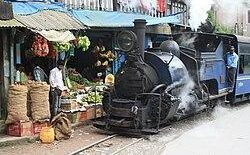#4 Railways and the British Raj: Impact on economy, society, and politics (Indian Railway Series)

Do you know that the introduction of railways in India during British rule was a watershed moment in the subcontinent's history? The iron snakes, as trains were often called, slithered their way into every corner of India and transformed the country in profound ways. The introduction of railways in India during British rule proved to be a double-edged sword. While built to serve colonial interests, the trains ended up firing the imagination of the nation and connecting diverse groups in the struggle for independence. The iron snakes both consolidated the Raj and contained the seeds of its destruction.
Economic Impact
According to historian Romesh Dutt, the railways were built "with the one object of taking away India's precious resources to England and of facilitating the expansion of British commerce and industry."
You will be shocked to know that by 1929, a staggering Rs 300 crore, or over one-third of India's revenues, was allocated to railway companies as guaranteed interest.
Also, the British selected railway routes that would maximize raw material procurement from the hinterland. The lines directly connected inland mines and agricultural centers to major ports for easy export of iron ore, coal, cotton, and wheat back to Britain.
This boosted industrial growth in Britain while dealing a death blow to indigenous Indian industry. The railways were the arteries of British colonialism, draining away India's wealth.
Social Impact
The iron snakes cut through the barriers of caste, class, and gender in unprecedented ways. Special ladies' compartments allowed women to travel without purdah for the first time. Different classes could mingle on the same train, albeit in separate carriages.
You will be amazed to know that special bathing spaces were later added to trains to allow orthodox upper-caste passengers to bathe after being 'polluted' by contact with lower castes.
Such social mixing sparked new artistic, literary, and reform movements across India. However, the disruptive impact also caused the dislocation of traditional livelihoods and crafts.
Political Impact
Strategic railway lines firmly established British territorial control across India. The troop movement was facilitated to suppress any revolts against the Raj.
But ironically, the trains also became weapons in the arsenal of the freedom movement. As Jawaharlal Nehru remarked, "The railways gave real impetus and strength to our national movement."
The railways enabled political mobilization and organization on an unprecedented scale. Diverse groups were able to unite across provinces under a common national cause.
Double-Edged Sword
And so the rails, often used to transport British troops to crush Indian unrest, also carried the winds of freedom and revolution. The colonizer's tools became instruments of the colonized.
As Nehru put it, "The impact of the railways has been tremendous in India, economically, socially, and politically." The iron snakes both strengthened and ultimately destroyed the Raj.
Source:
Bipan Chandra, India's Struggle for Independence
The History of Indian Railways
Indian Railway History Timeline
Jawaharlal Nehru, An Autobiography